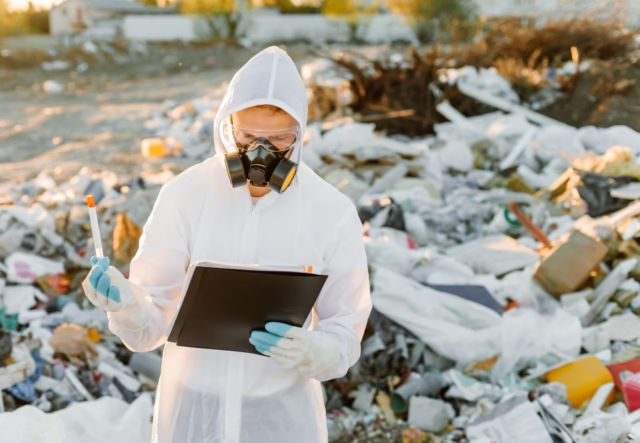Electronic waste is expanding quickly. It encompasses thrown-away equipment, devices, and electronic parts. Old phones, dead laptops, and obsolete televisions often wind up in the trash. The issue is that these devices include poisonous substances. Furthermore, they contain useful metals that are ready for reuse. Incorrect disposal causes health concerns and pollution. Yearly electronics demand is increasing. This suggests a future generation of more trash. Solving the issue begins with an understanding of waste. Understanding how it affects the Earth enables us to act. Responsible usage and disposal will help to change the course. Services such as Skip hire locally can support companies and households in their safe disposal of electronics. Trusted disposal companies help to lessen the chance of hazardous trash landing in the incorrect area.
The Scale of the E-Waste Problem
One of the quickest rising waste streams worldwide is e-waste. Millions of tons are created yearly. Many gadgets are replaced before they become useless. The demand for new models drives the waste. Developed countries create more e-waste per person. Much of it, though, is sent to underdeveloped countries. These nations frequently have inadequate recycling infrastructure. Unsafe handling of dangerous items results in. Unprotected informal employees disassemble gadgets. This results in serious environmental and health harm. The issue isn’t slowing down. It needs both worldwide and locally based solutions.
Environmental Hazards of E-Waste
Lead, mercury, and cadmium toxic compounds found in waste can seep into soil and water when discarded in landfills. Plants, animals, and humans all suffer from this pollution. Toxic chemicals are emitted during the open burning of e-waste. These gases contaminate the atmosphere and aggravate breathing difficulties. Rivers’ next toe-wastee sites often become unsuitable for agriculture or consumption. Wildlife suffers when food chain chemicals enter. Certain regions have permanent soil damage. Heavy metals still linger for decades in the environment. This highlights the need for correct disposal for environmental protection. Every device we throw away carelessly increases the danger.
Human Health Risks from E-Waste
Those dealing with the waste run great hazards. Without any protection, they frequently deal with sharp components and toxic dust. Exposure to lead can damage the brain, particularly in kids. Mercury impacts the kidneys and neurological system. Breathing plastic-burning fumes harms the lungs. Long-term exposure could result in organ failure and cancer. Also suffering are nearby e-waste site communities. Toxins are spread by polluted soil and water. The most susceptible are children, who absorb more pollutants and sustain more damage. Protecting human health depends on safe recycling techniques as well as on keeping hazardous waste out of sensitive areas.
Key Precautions to Reduce E-Waste Impact
Every one of us can take measures to lessen the damage from e-waste. Buy equipment only when you must. Select long-lasting, high-quality equipment. Replace things slowly; repair them. Recycle old devices via accredited e-waste programs. Donate working gadgets to those who may use them. Avoid throwing electronics in regular trash bins. Remove personal data before disposal. Support brands with eco-friendly designs and recycling policies. Educate others about safe e-waste handling. Governments should ensure regulations for proper trash disposal . Companies have to be accountable for the goods they provide. Little acts have the potential to produce great transformation.
Global Efforts and Regulations
Many nations are trying to conserve waste more effectively. Stiff European Union recycling legislation exists. It calls for manufacturers to retrieve obsolete equipment. Some countries forbid the export of e-waste to impoverished nations. International accords seek to prevent unauthorised disposal. But enforcing laws is still difficult. In many places, informal recycling is still practised. Public awareness initiatives support better garbage disposal. Technology companies are also launching takeback initiatives. Though more acceptance is required, these initiatives are evidence of development. Stronger rules might safeguard workers and the environment. Success depends on international cooperation.
Taking Action at the Community Level
We all have a responsibility to select secure waste disposal methods. Working with dependable trash services like SkipHireLocally guarantees the appropriate treatment of electronic devices. These solutions help to retrieve important materials, remove hazardous components, and stop dangerous waste from contaminating the environment. Families and companies can lower their carbon footprint by making this modest change. For decades to come, it’s a sensible choice that safeguards both people and the natural world.
Conclusion
As technology progresses, e-waste will only grow. The difficulty is to handle it such that people and nature are left unaffected. We should create electronics with recycling in mind. Consumers should select products fit for easy repair and recycling. Companies have to promise to reduce trash at every level. Governments ought to encourage safe recycling sectors. Habits are greatly altered by knowledge. People have to grasp the need for responsible disposal. Future generations depend on the decisions we make now. It is feasible to save the Earth from e-waste. It asks for ongoing work and shared accountability. Together, we can stop the tide.
Visit Smartskill97 for more informative blogs.







